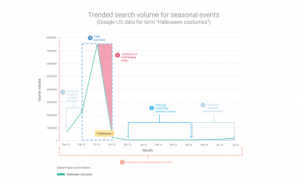How you approach the market and address the competition to achieve your objectives is the realm of strategy. Strategies can be defensive or offensive or a combination of both. One offensive strategy you can leverage to outmaneuver competitive rivals can be taken from the sports world: the fast break. Originally created by Frank Keany and used in a variety of team sports, a fast break helps a team move quickly into scoring position before the competition has time to set up or regroup. To succeed with this approach, you need to be able to do two things well: attack the opposing team and keep them on the defense while setting your team up to score.
The purpose of a fast break is simple: score quickly while the other team is off balance. Scoring is an easy concept in the world of sports. In business, moving into a scoring position may entail knowing how to engage with your ecosystem, service customers, and enable your Sales team. In the end, scoring in business comes down to customers: acquiring customers, keeping customers, and growing the value of customer.
Put on the Pressure with a Fast Break
Timing and tempo are critical aspects of a fast break strategy. In basketball, teams deploy a fast break after a steal, a rebound, or a blocked shot. In the world of business, these can be loosely translated into closing or losing a critical deal, or a rebound from an internal or external situation (think how exercise equipment companies are leveraging the recent Peloton scenario). The key is to be ready to make your move. In the business world setting up a scoring opportunity requires you to closely monitor your market and competitors. To deploy the fast break in in business, you will need to make keeping a pulse on the market and collecting data about your competitors and customers a top priority.
The value of a fast-break strategy is that it allows you to control the speed of play. In some instances, you want to speed up the pace of play and in others you want to slow it down. How might this apply to business? Fast break moves in business might include being first to establish a critical partnership, adapt to a new technology (think cloud and now, machine learning), or first to bring a new solution to market. One key intent of the fast break is to wear down your opponent and potentially force them into hasty decisions. Competitors making a bad pricing decision, moving too quickly or too slowly into a segment, or launching a new product too early or too late illustrate this idea.
To succeed at the fast break in sports, you need to play fast but not out of control – moving quickly but not making turnovers or passes that can’t be caught. The same applies to your business team. Internal teams need to be able to pass, catch, and score. This requires excellent communication and quick decision making.
How to Score with a Fast Break Strategy
Before you take action to implement a fast-break strategy, give some thought to these questions:
- What do you expect to accomplish with the fast break? Remember fast breaks are intended to create quick scoring opportunities. What do you want to score? What are you willing to risk?
- What will be your primary plays for the fast break? In basketball, it might be 3-pointers, layups, or short jumpers. In business, it could be an aggressive marketing campaign, launching a new line of products, or changing up pricing.
- What do you hope to achieve with the competition? Likely outcomes may be to force them to play defense for an extended period or to sell or spin off a technology.
- How will the fast break help you achieve your overall mission?
Executing an effective fast break places extreme pressure on your opponents and often forces them to adjust their game plan or make more mistakes. For every action there is a reaction. What’s essential is being able to execute seamlessly. Fast breaks take speed, agility, teamwork, and an aggressive mentality. To be successful with a fast break strategy, you need a culture that encourages the team to “go on the attack” and a team that is in excellent “playing condition” because every player on the team has the potential to score.
If you frequently implement a fast break strategy, eventually your competition will adjust. You need to anticipate how they will counter. It also means that your long-term success with the strategy will require you to pick up the tempo while being quicker at making decisions. With this approach the focus is on making the best shots when opportunities are presented and executing the business and Marketing fundamentals at top speed.
Business & Finance Articles on Business 2 Community
(59)
Report Post





